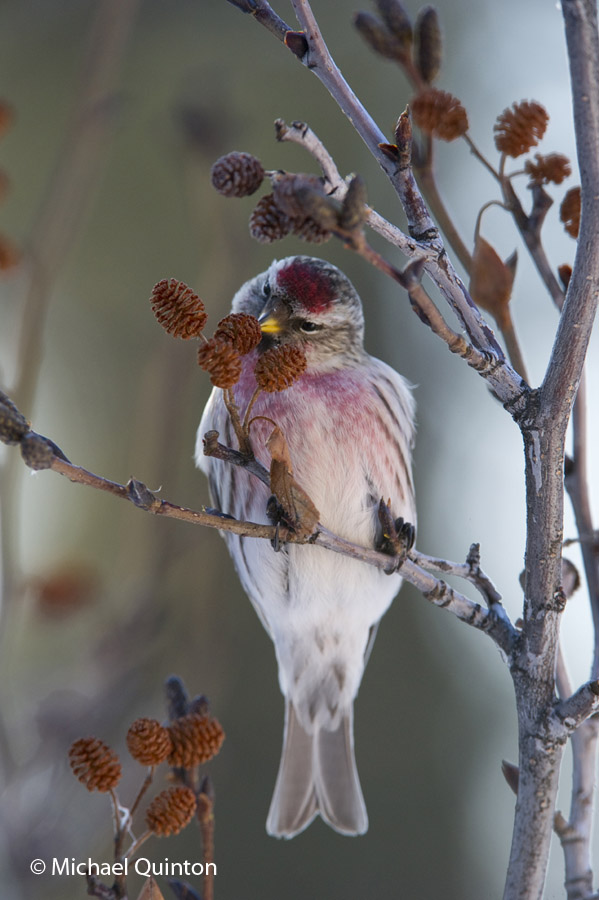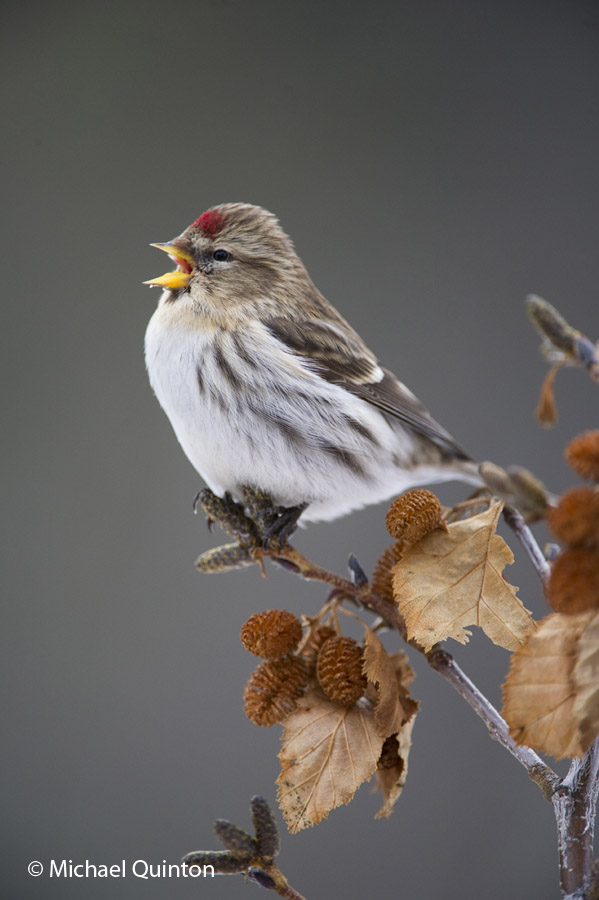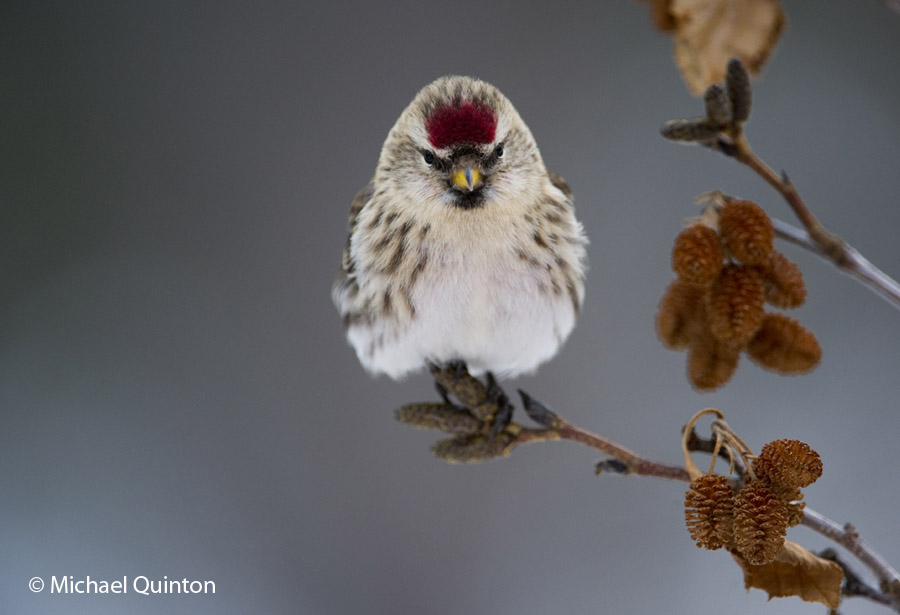 What a joy it is to observe common redpolls every day all winter long. When the bottom drops out of the thermometer they go about their cheerful, lively routine seemingly without regard to Interior Alaska’s dangerous temperatures. Redpolls are active from first light until sunset. Even at fifty below you will find them busy, usually in small groups feeding among bushes. But where they spend the nights is a mystery to me. They have been reported to spend some nights in snow burrows, like ptarmigan.
What a joy it is to observe common redpolls every day all winter long. When the bottom drops out of the thermometer they go about their cheerful, lively routine seemingly without regard to Interior Alaska’s dangerous temperatures. Redpolls are active from first light until sunset. Even at fifty below you will find them busy, usually in small groups feeding among bushes. But where they spend the nights is a mystery to me. They have been reported to spend some nights in snow burrows, like ptarmigan.
 What they find to keep their tiny tanks topped off is the key to their ability to survive the ruthless Alaska winters. That such insignificant seeds of alder, alpine birch, and willow can fuel their energetic day and keep burning right on through the longest winter night is incredible.
What they find to keep their tiny tanks topped off is the key to their ability to survive the ruthless Alaska winters. That such insignificant seeds of alder, alpine birch, and willow can fuel their energetic day and keep burning right on through the longest winter night is incredible.
Photographing these tiny birds is challenging in several respects. Their tiny size requires a very close approach. Most of my best photographs were taken from about ten feet with a 560mm lens, (400 and a 1.4 tele extender) You need a lens with a very close focusing capability or use extension tubes. While redpolls at time seem to have little fear of man, they are skittish when very close, so you’ll need a blind. And, they have a habit of vaporizing into the thin, cold air at the slightest sound, including the click, click, click of a camera. You must develop a situation they will tolerate.
 A feeding station is the solution. Place a feeder with black oil sunflower seeds near a location with plenty of natural food. The redpolls will come for the sunflower seeds but will also spend some small fraction of their time foraging the wild plants. In my particular location in Alaska, there are just four species of birds that regularly visit my feeders. Common redpolls, pine grosbeak, black capped chickadee and boreal chickadee. Rarely there will be a hoary redpoll with the commons as well as the odd pine siskin. Within about five miles there are feeders with red breasted nuthatches but I am still waiting for my first. It takes time before a feeding station will begin to attract redpolls or any other species. Start your feeding station at the beginning of winter and visit it often to keep it well stocked with seeds. Locate your feeding station in a place that receives good morning and evening light where you will not be disturbed. I usually go through about 150 pounds of sunflower seeds annually.
A feeding station is the solution. Place a feeder with black oil sunflower seeds near a location with plenty of natural food. The redpolls will come for the sunflower seeds but will also spend some small fraction of their time foraging the wild plants. In my particular location in Alaska, there are just four species of birds that regularly visit my feeders. Common redpolls, pine grosbeak, black capped chickadee and boreal chickadee. Rarely there will be a hoary redpoll with the commons as well as the odd pine siskin. Within about five miles there are feeders with red breasted nuthatches but I am still waiting for my first. It takes time before a feeding station will begin to attract redpolls or any other species. Start your feeding station at the beginning of winter and visit it often to keep it well stocked with seeds. Locate your feeding station in a place that receives good morning and evening light where you will not be disturbed. I usually go through about 150 pounds of sunflower seeds annually.

